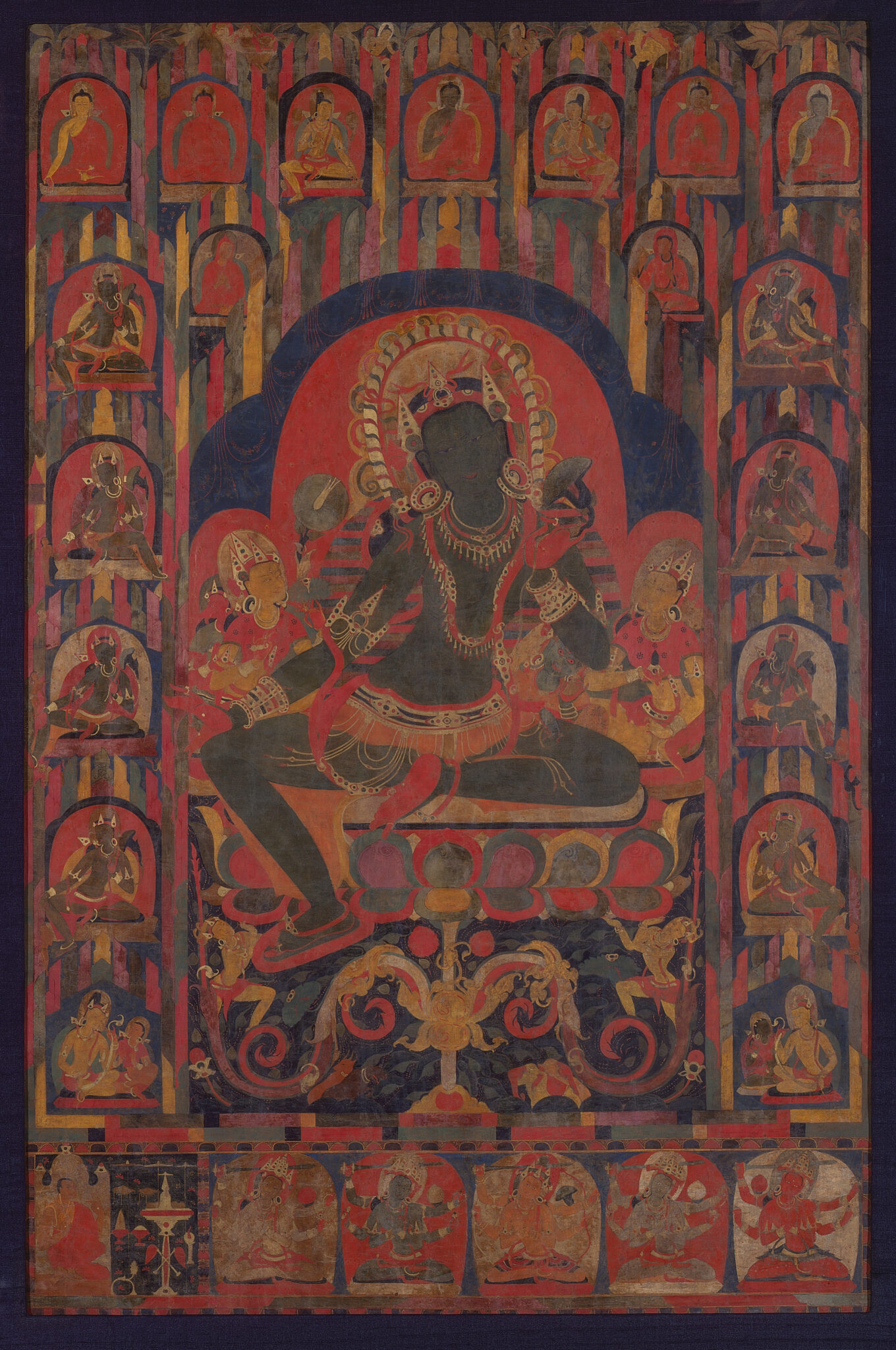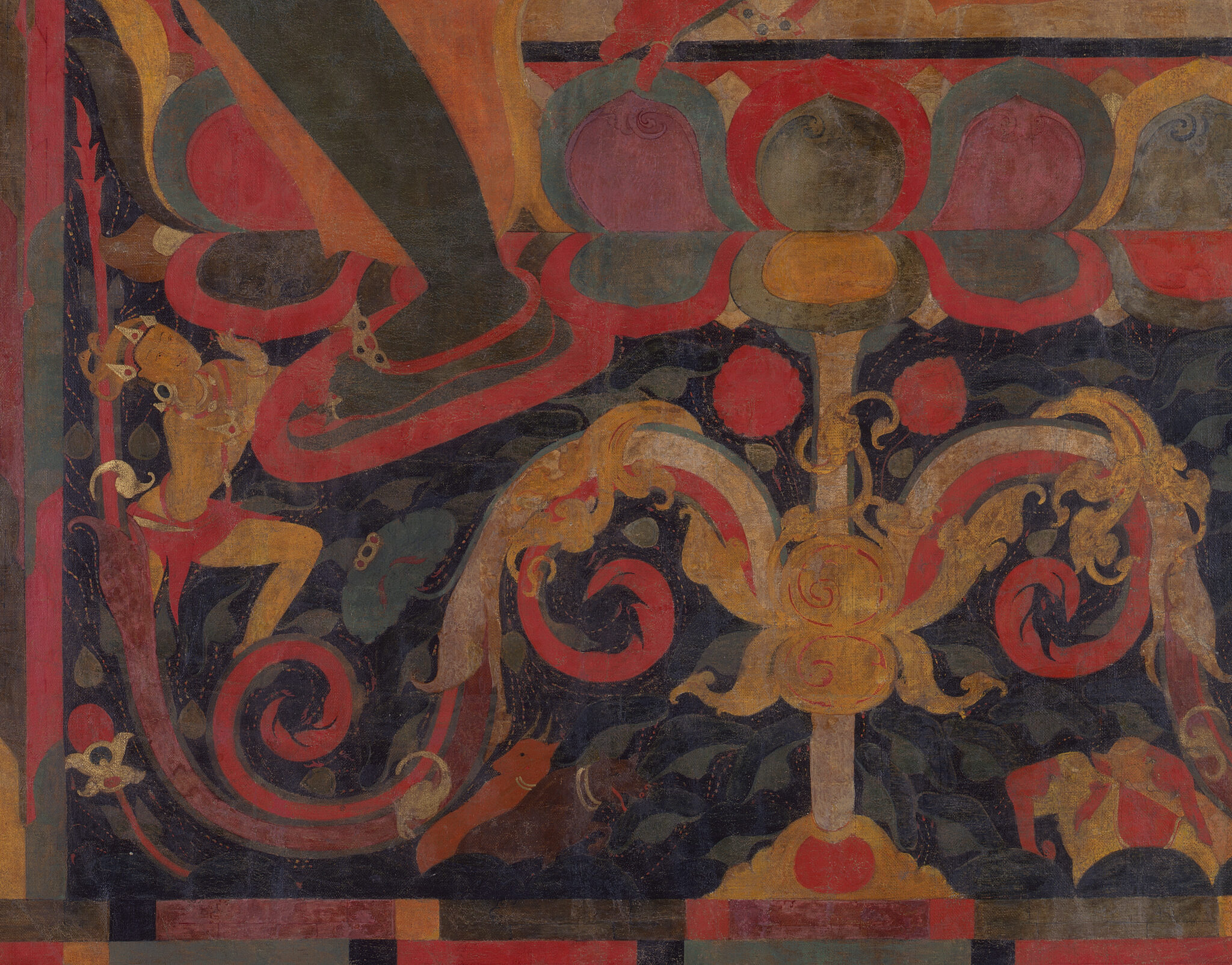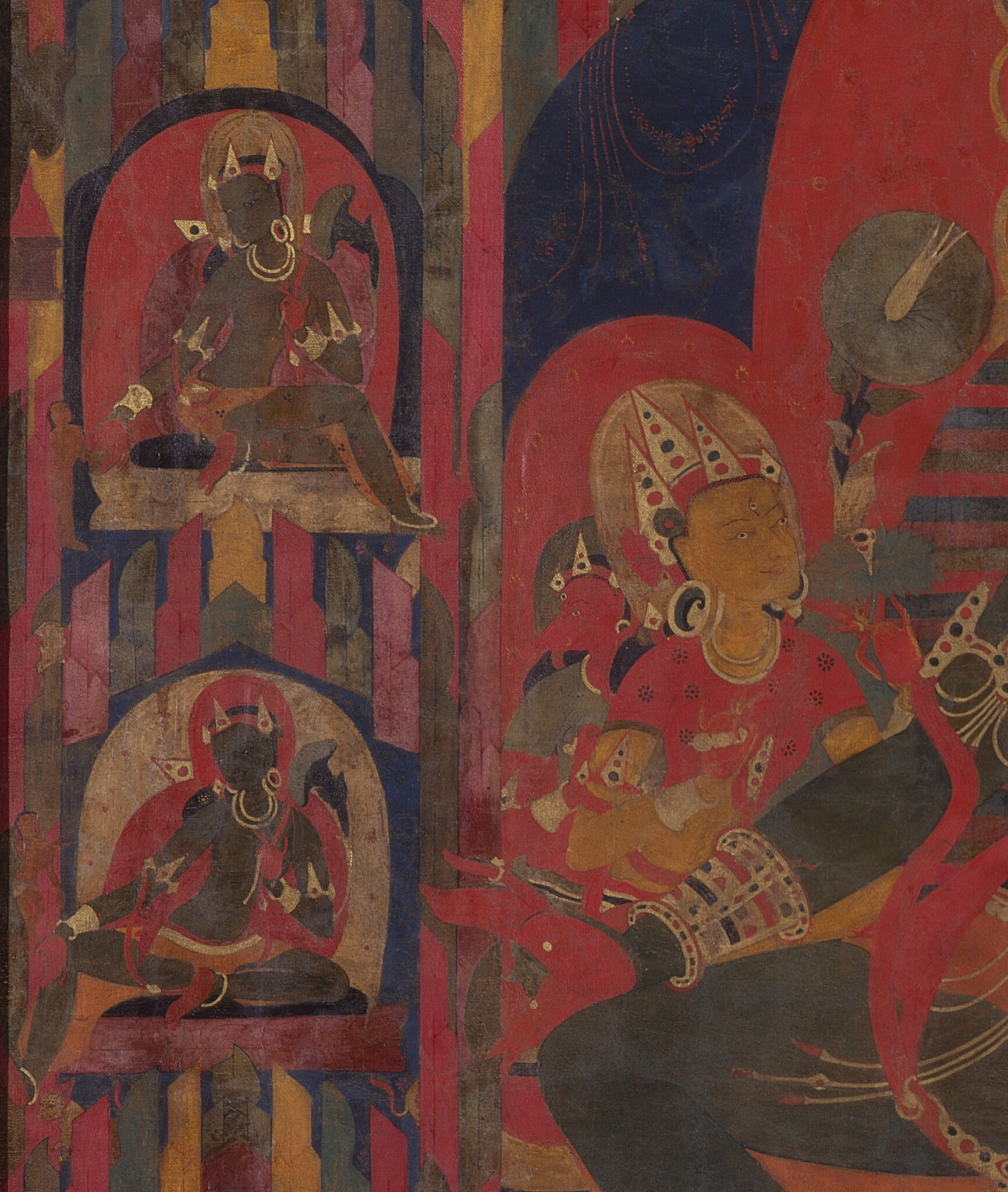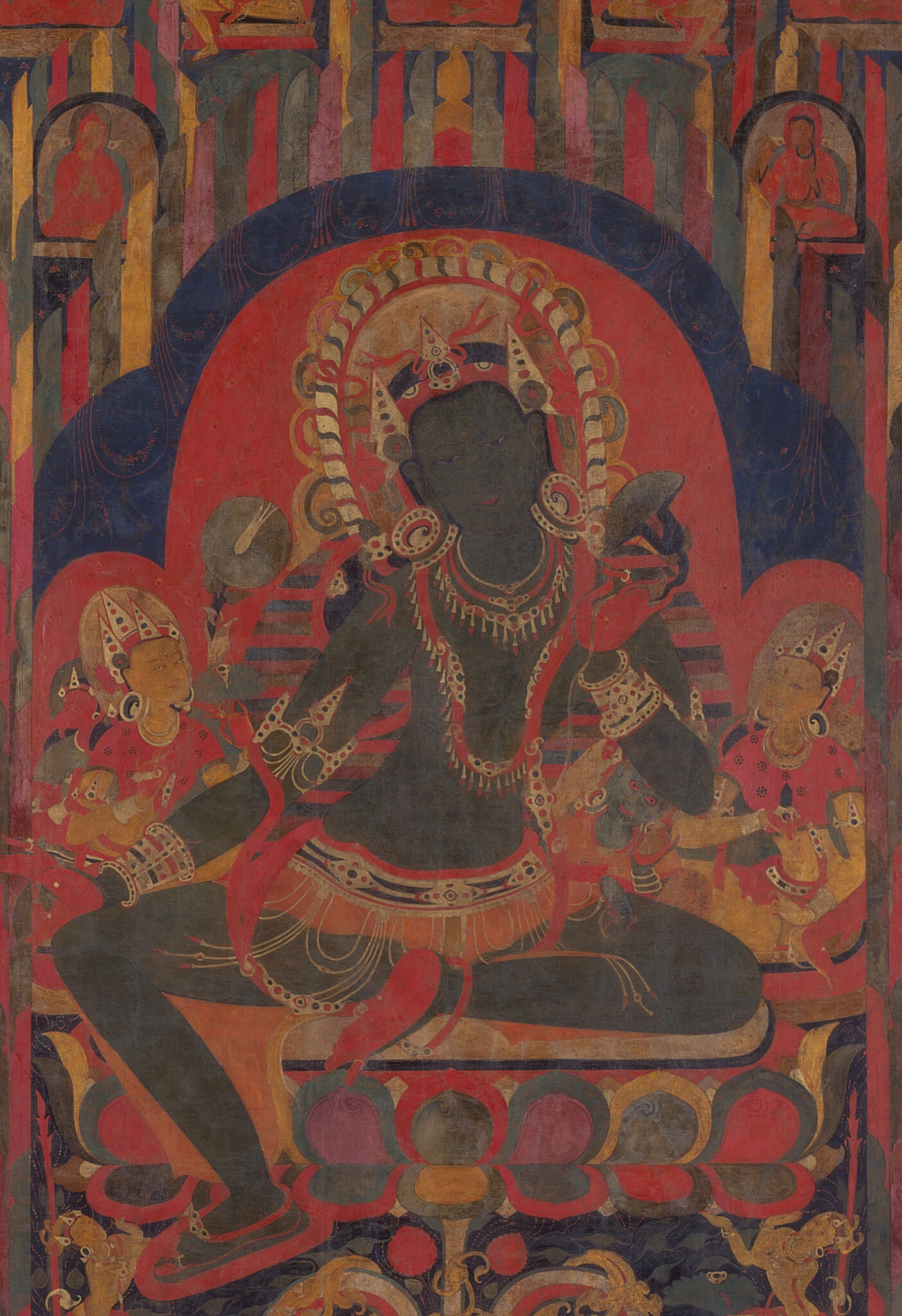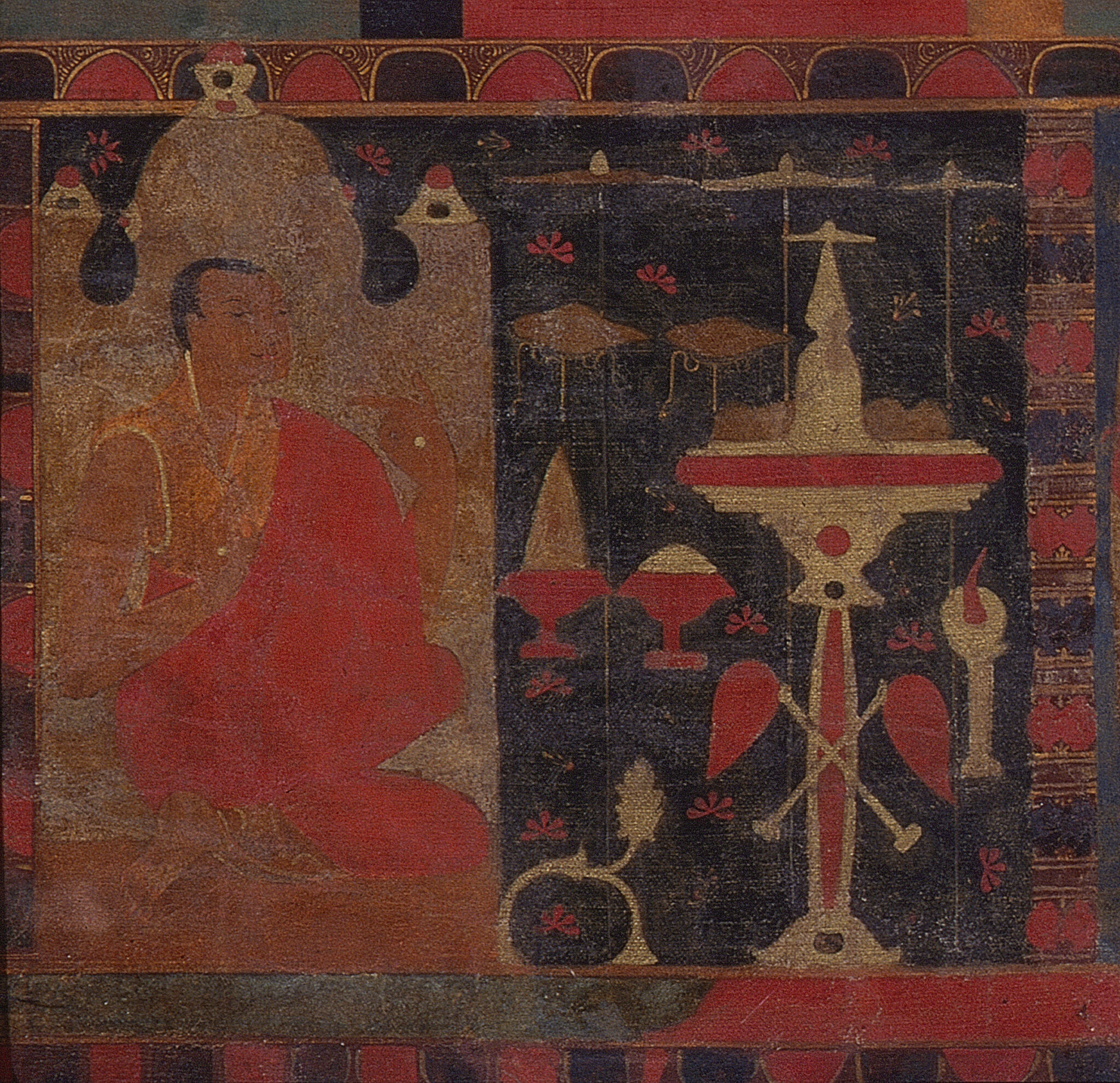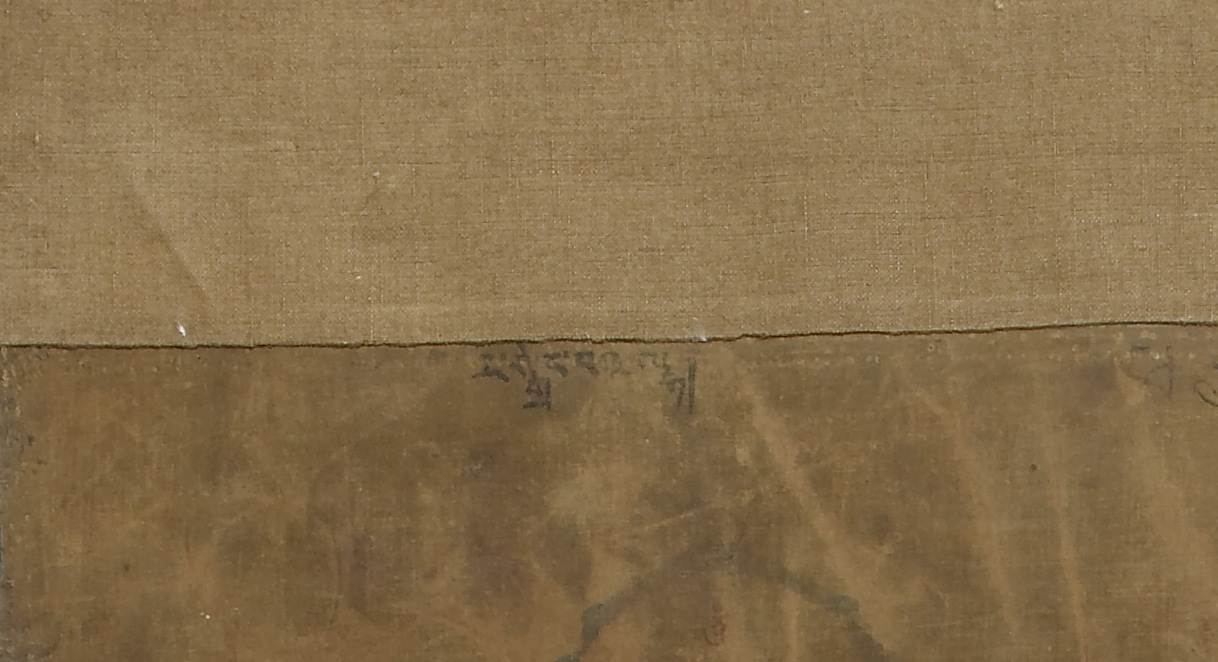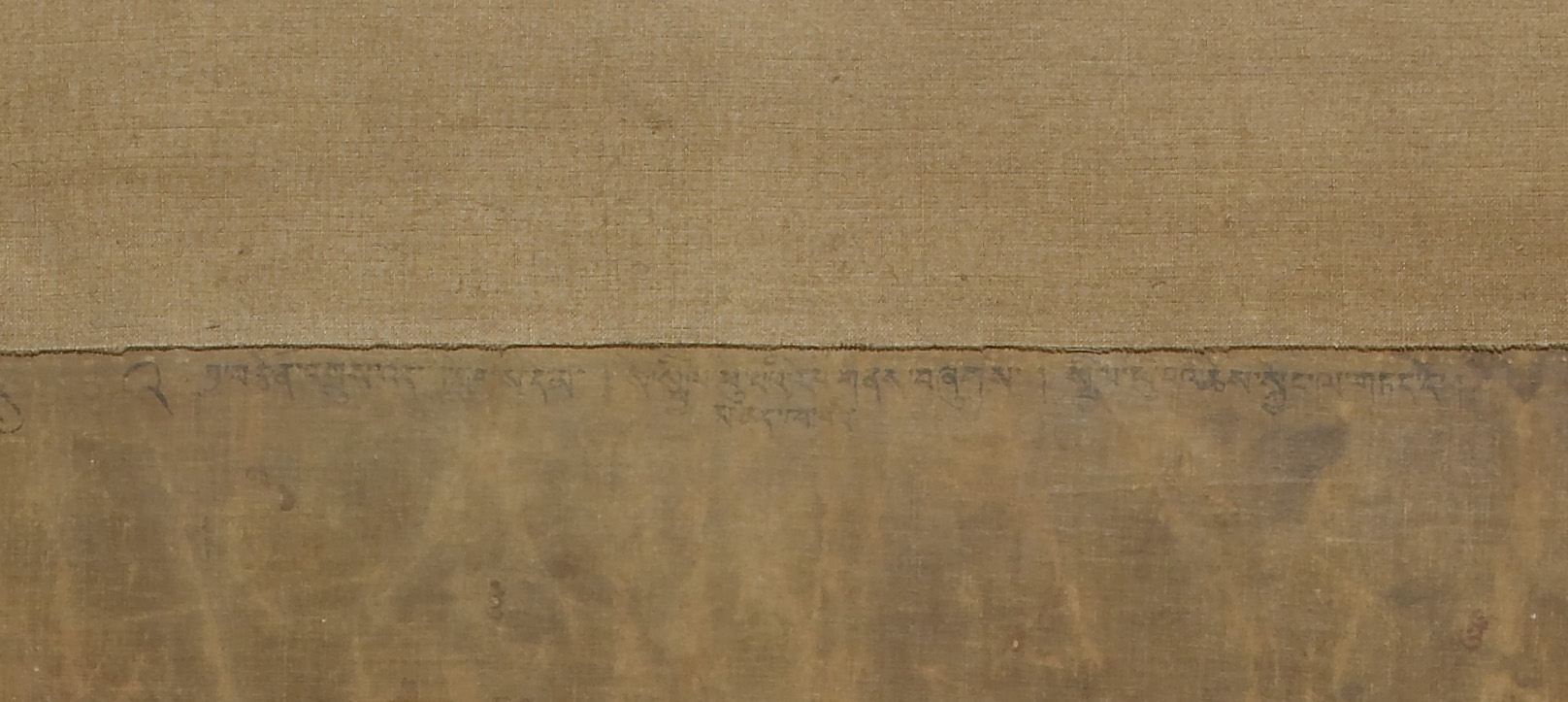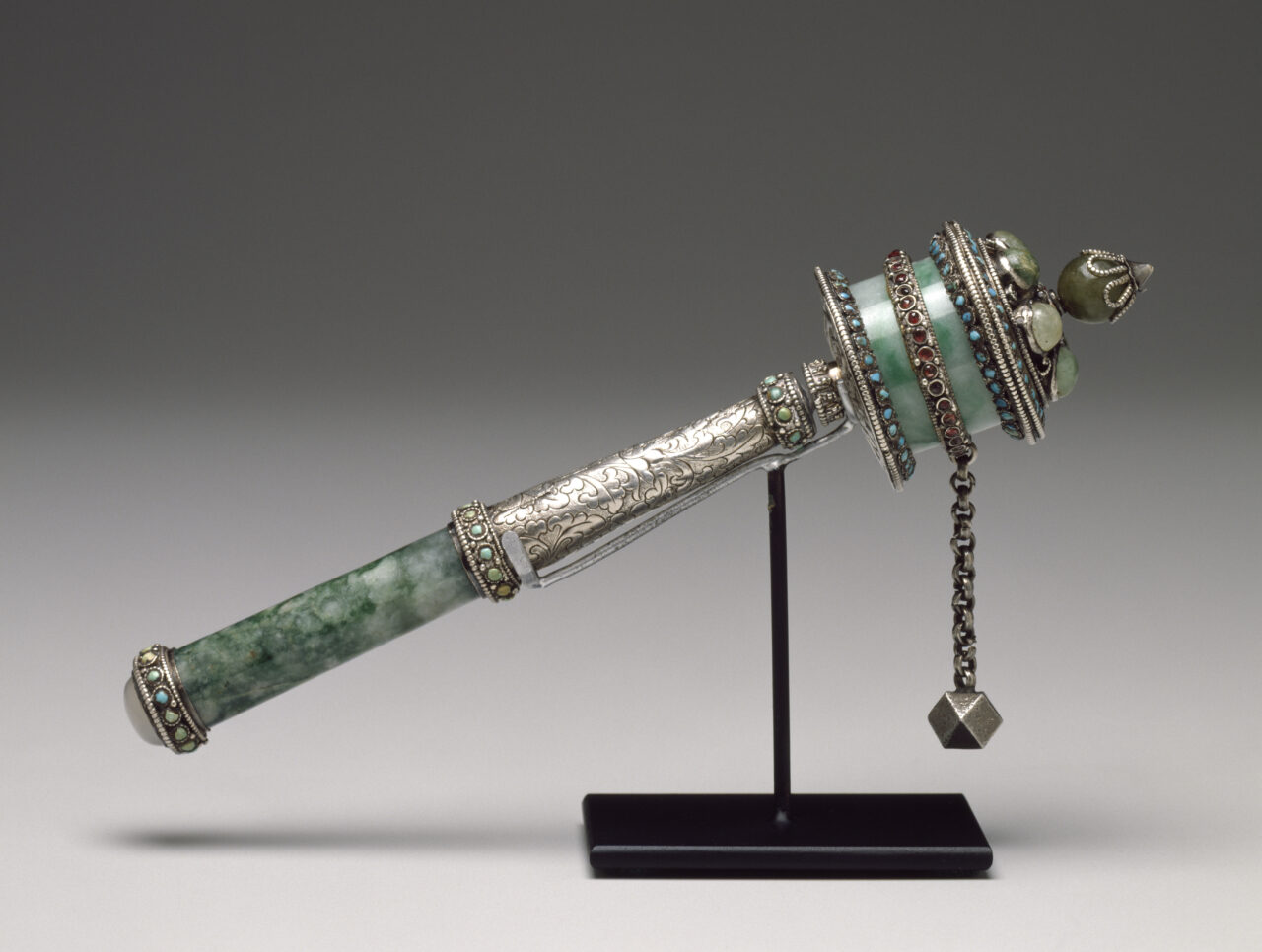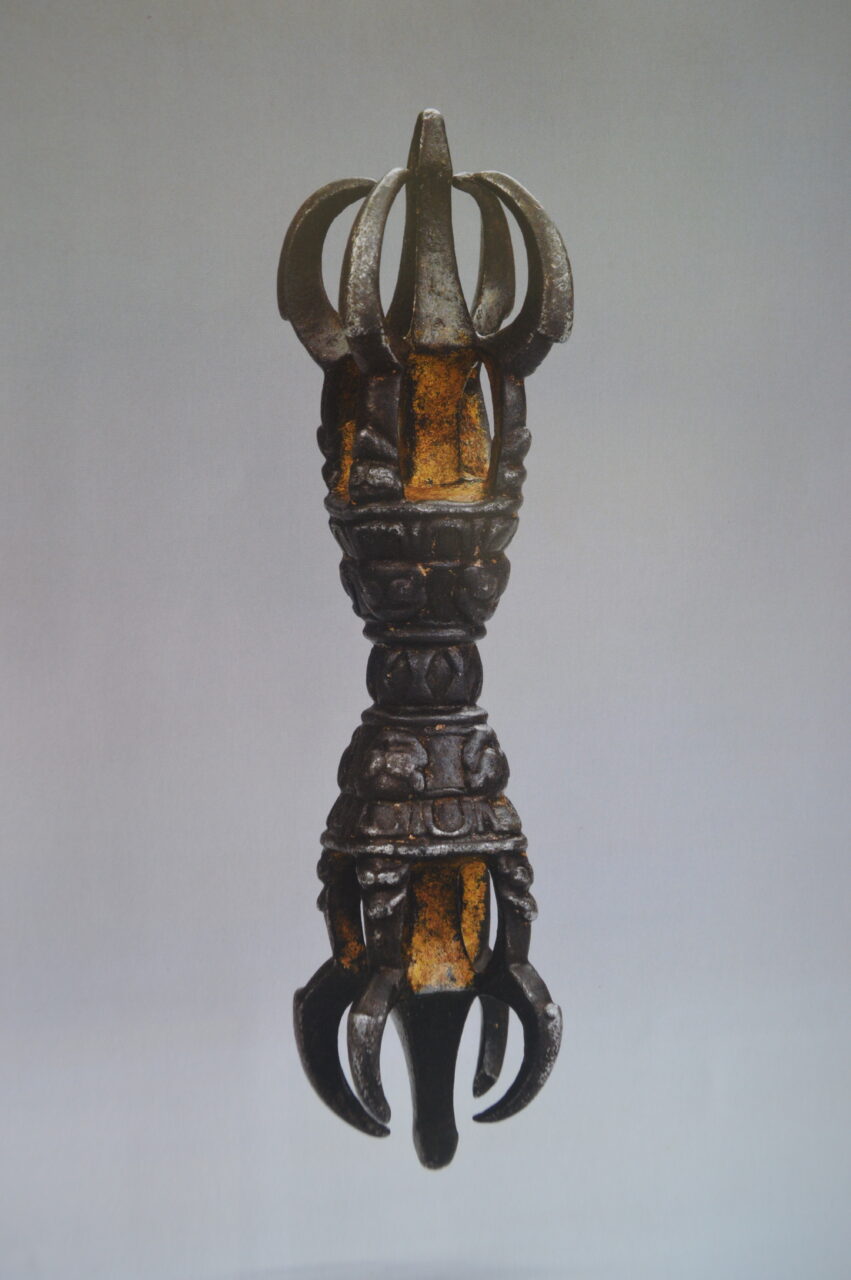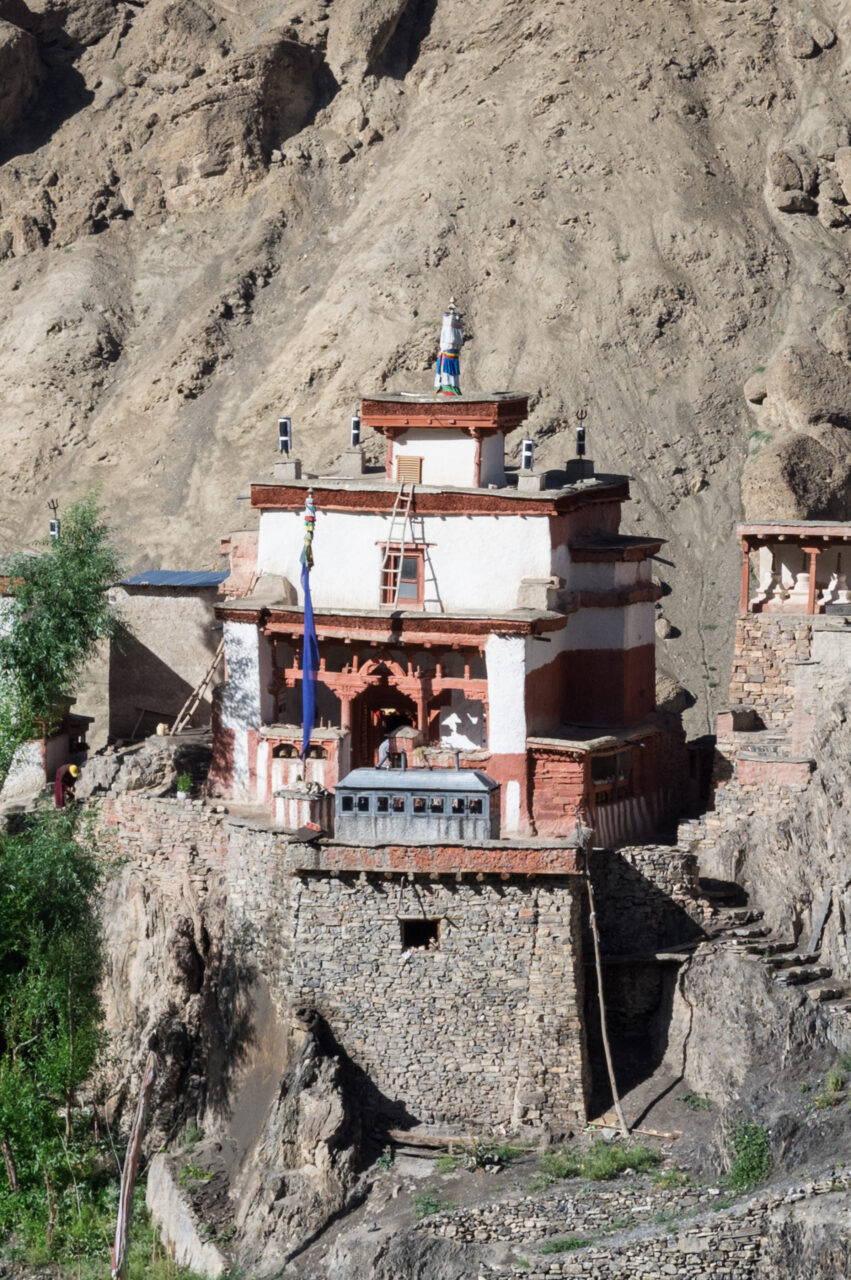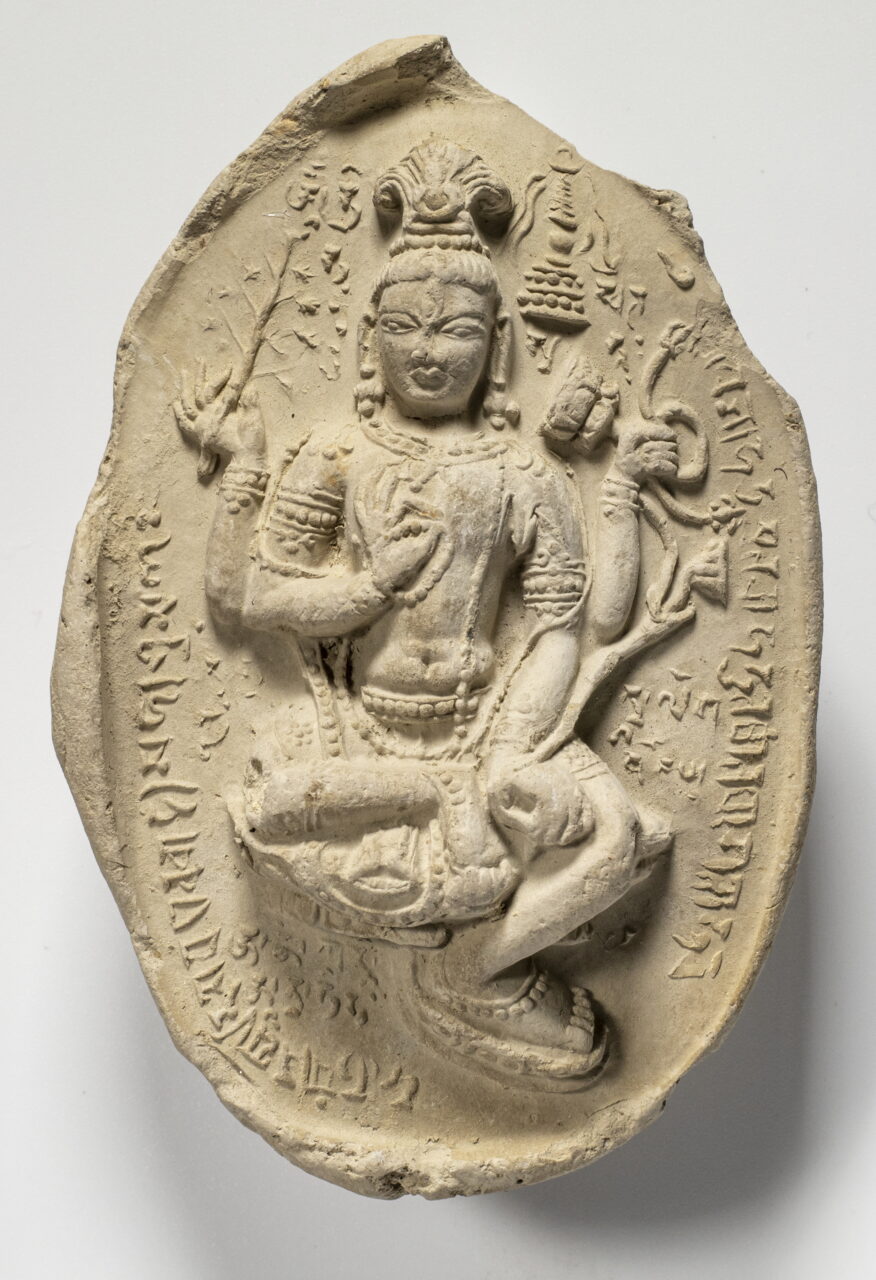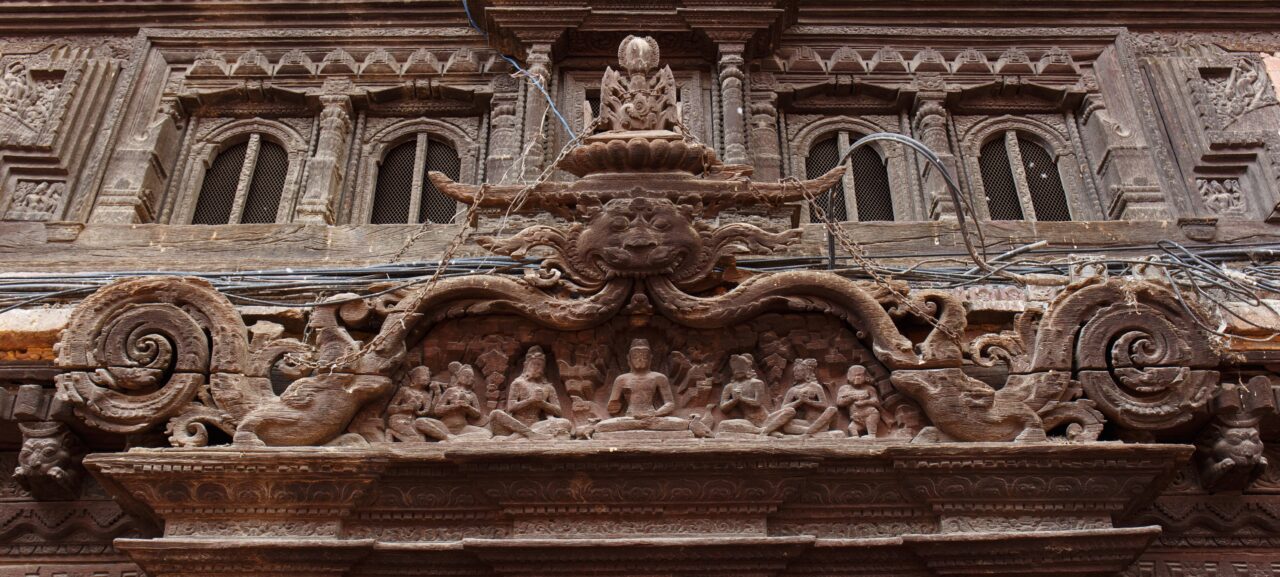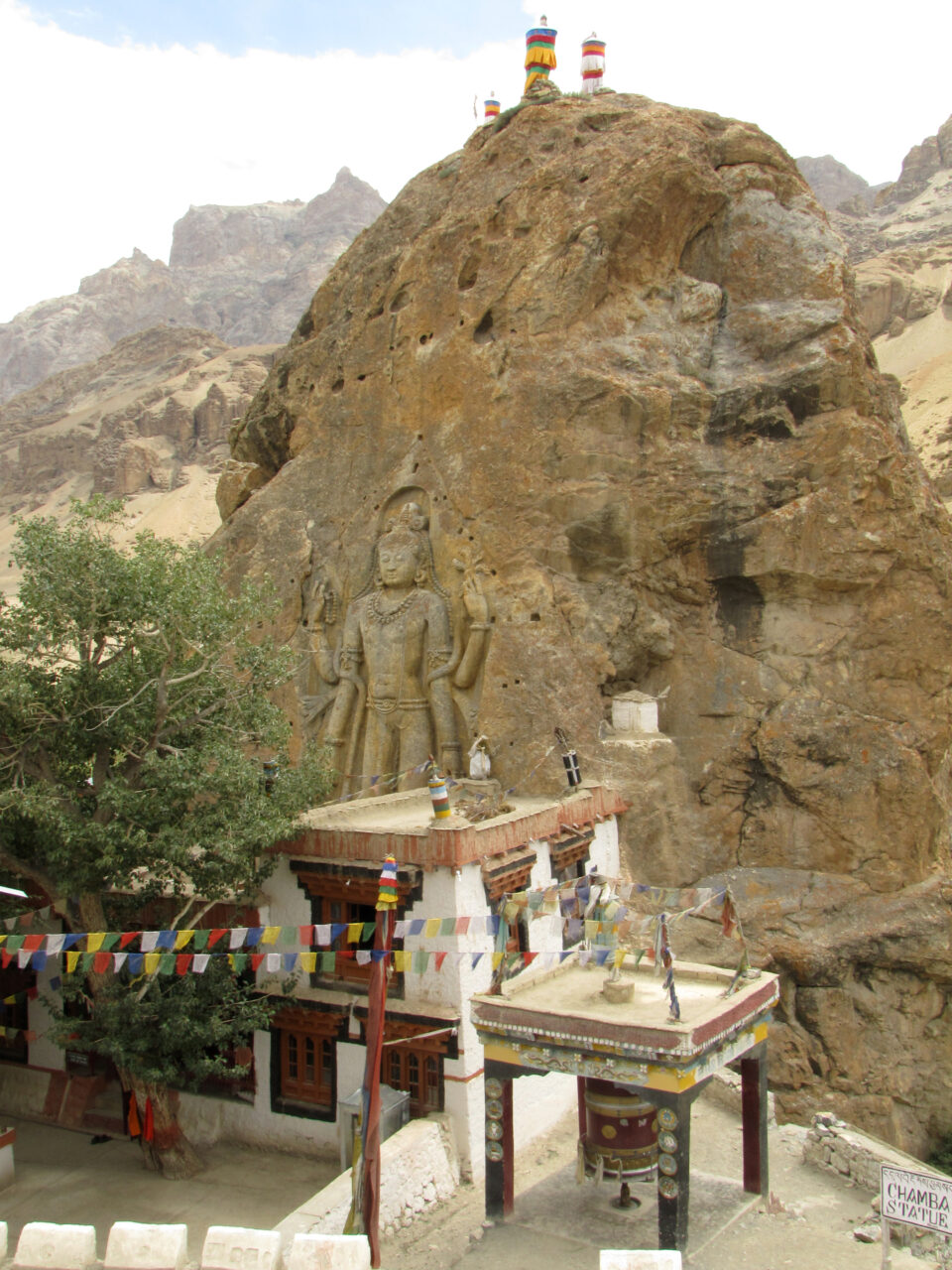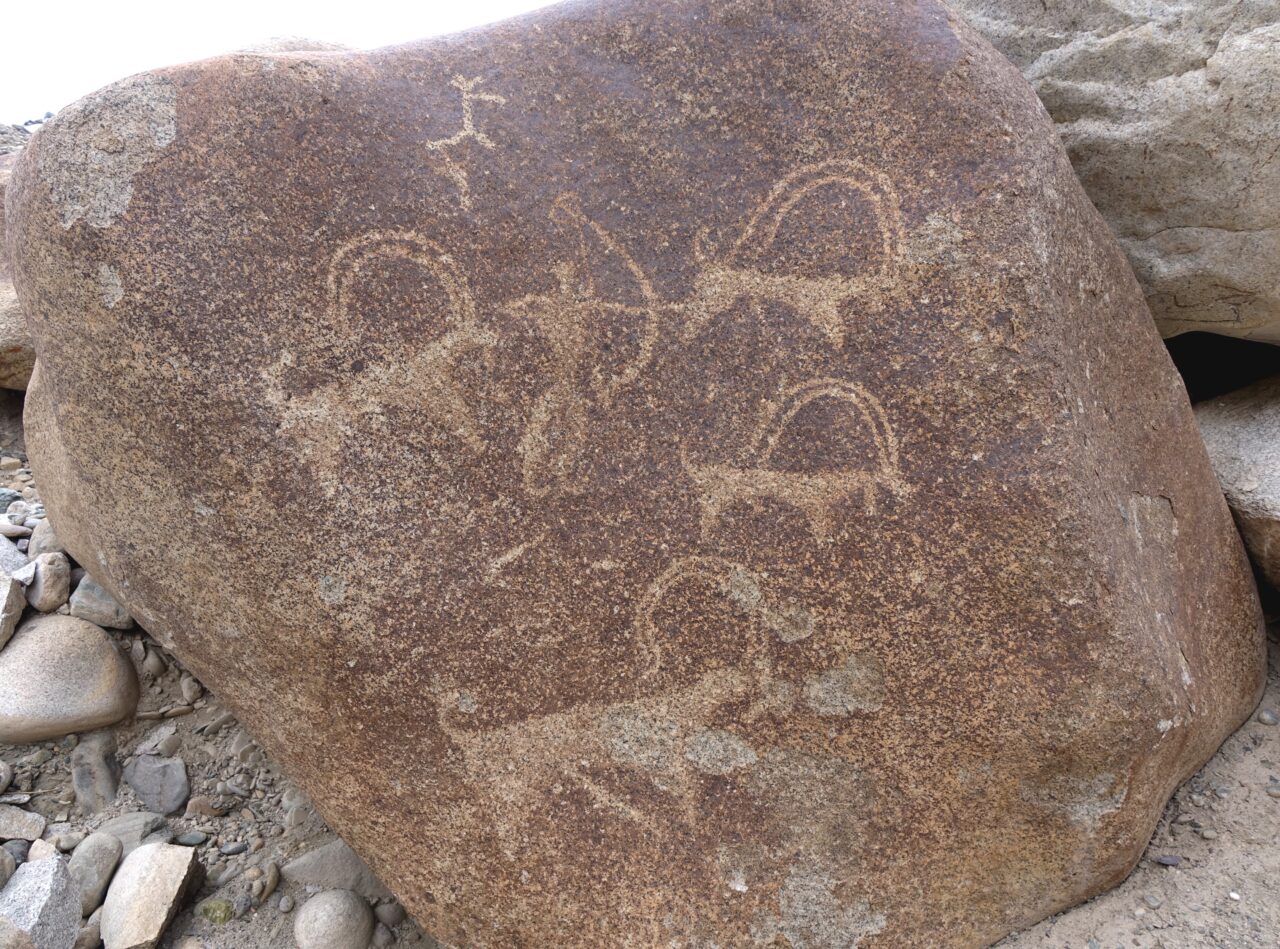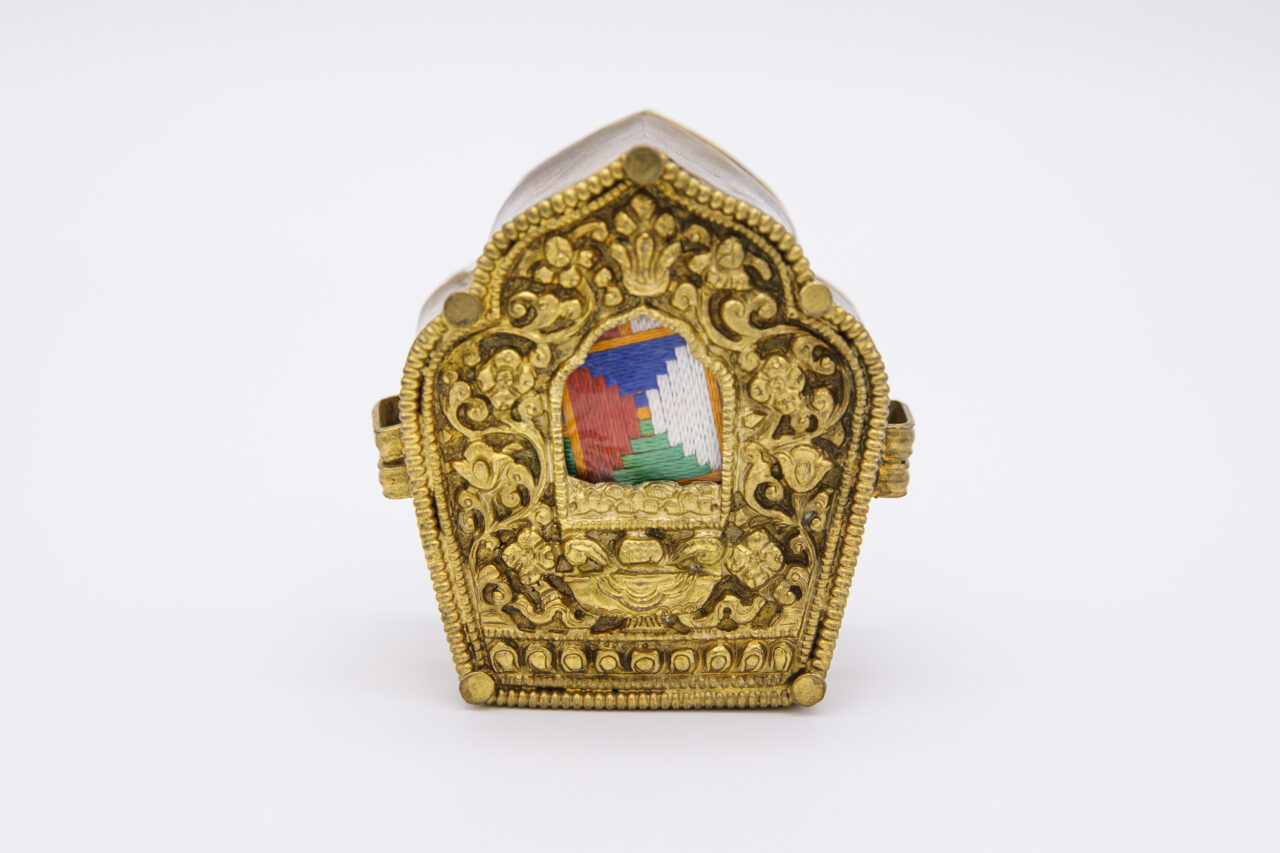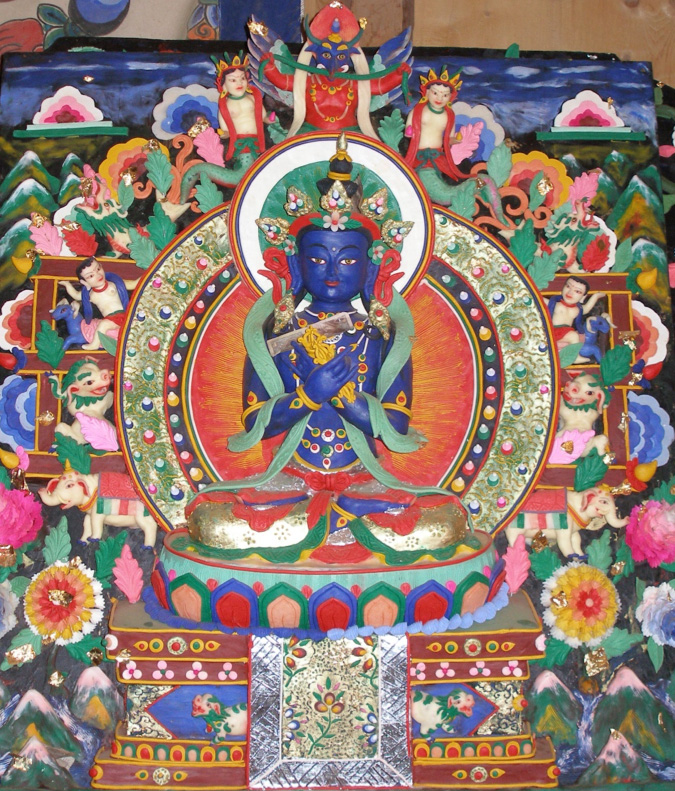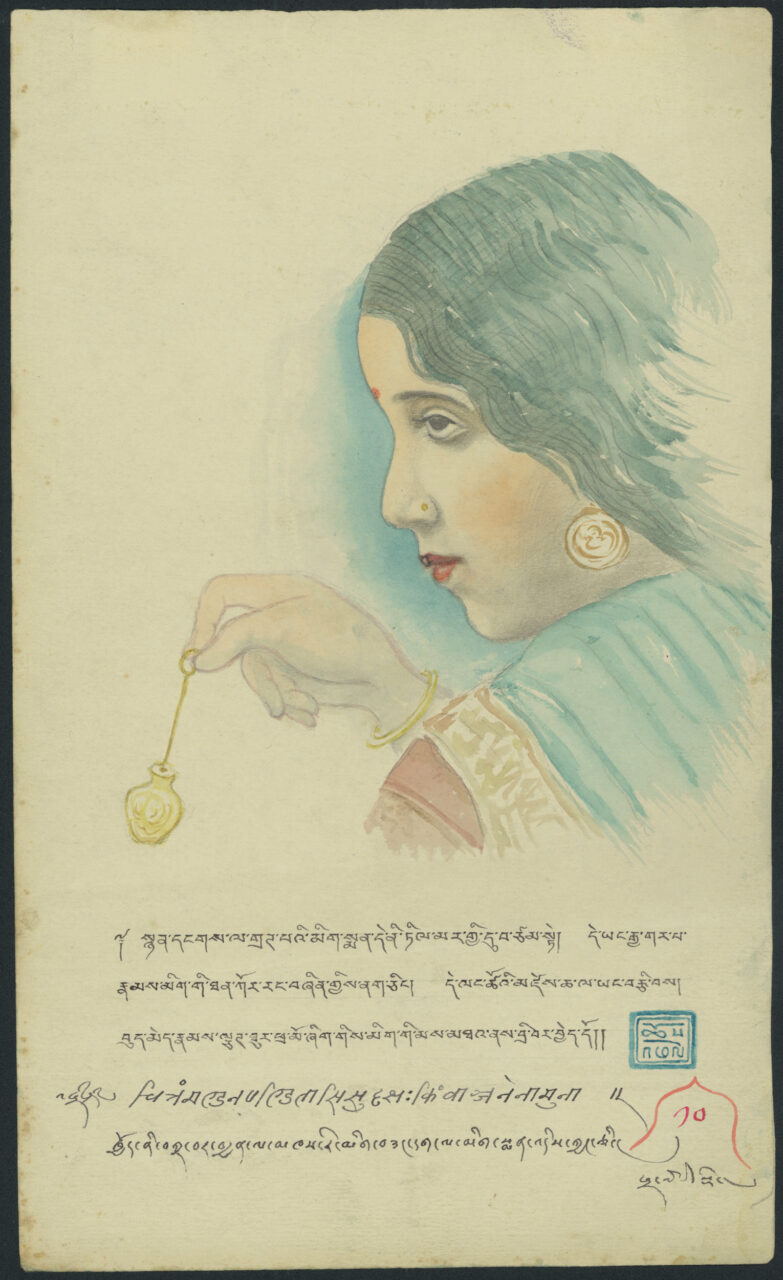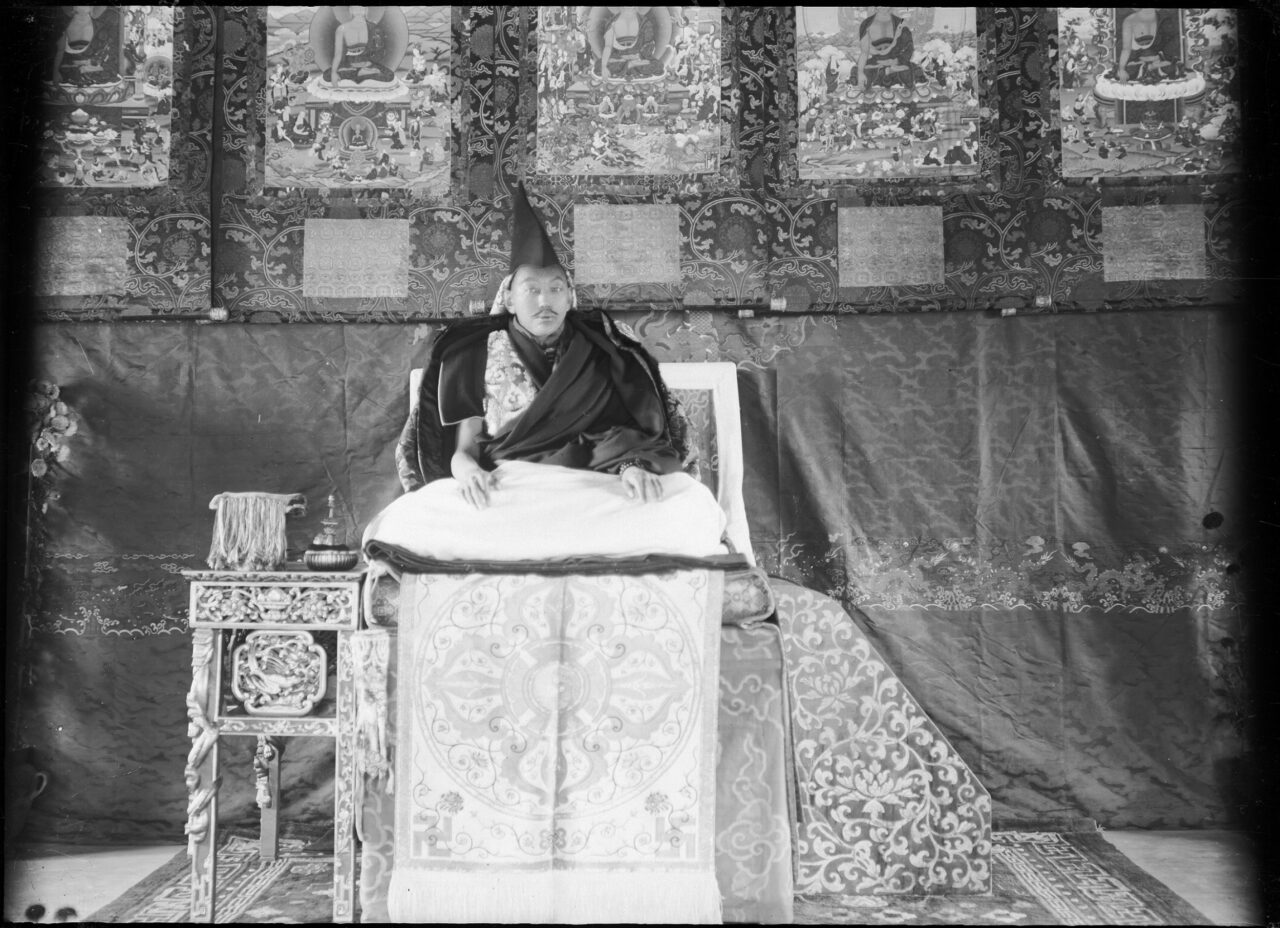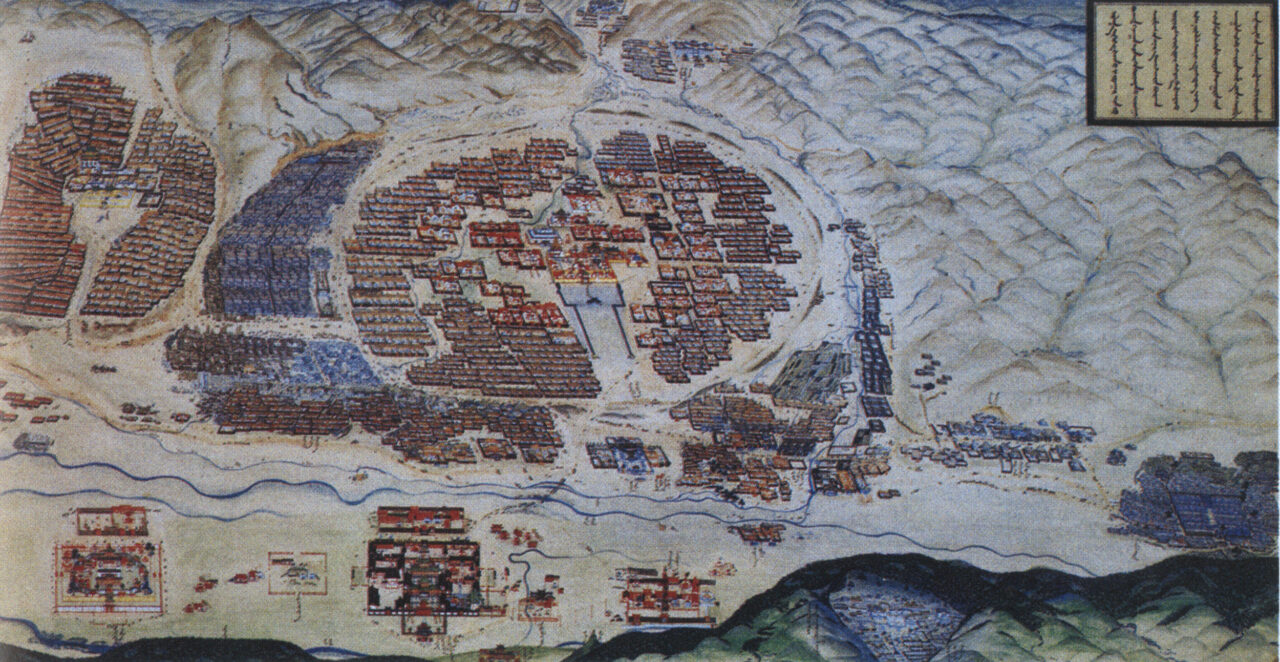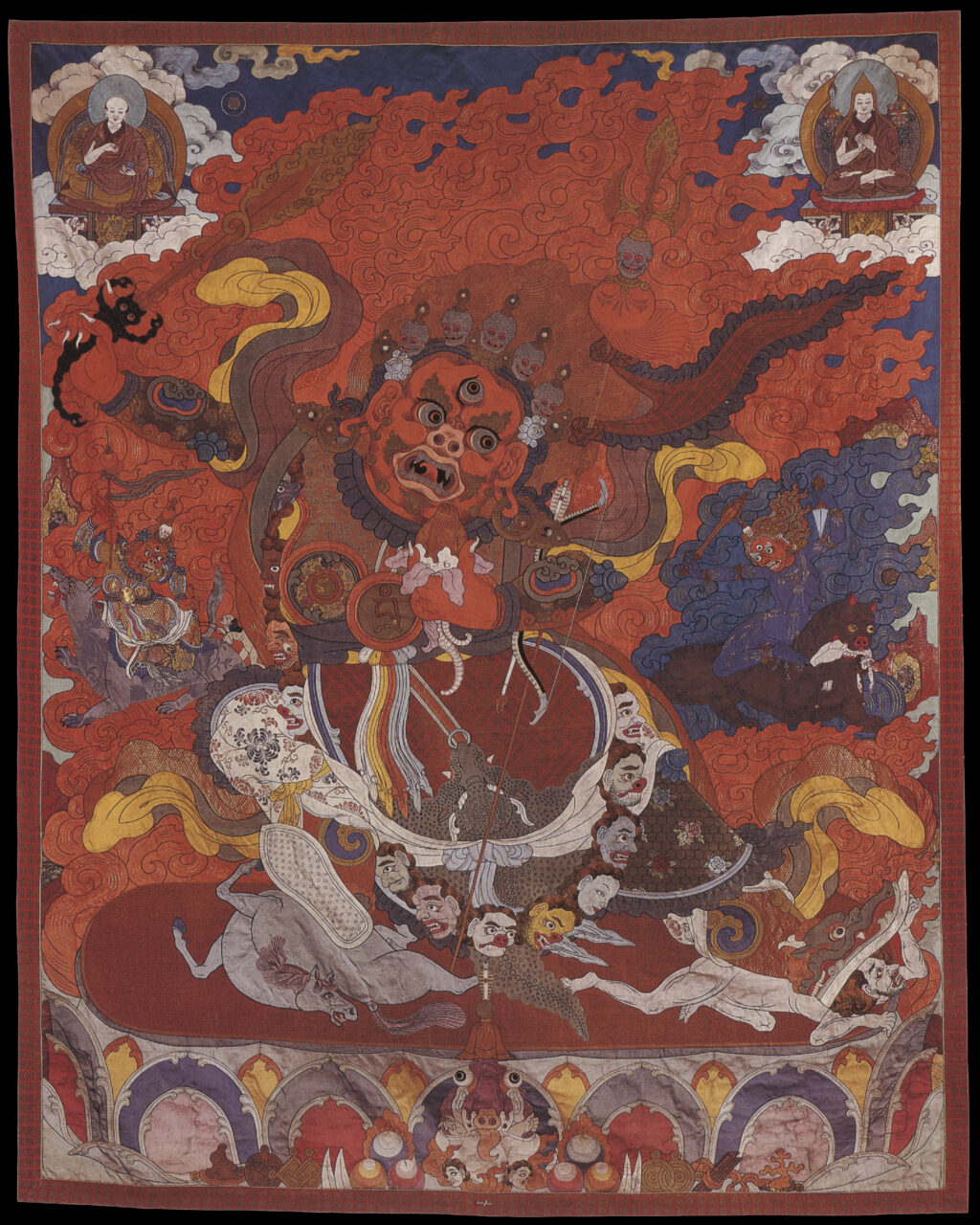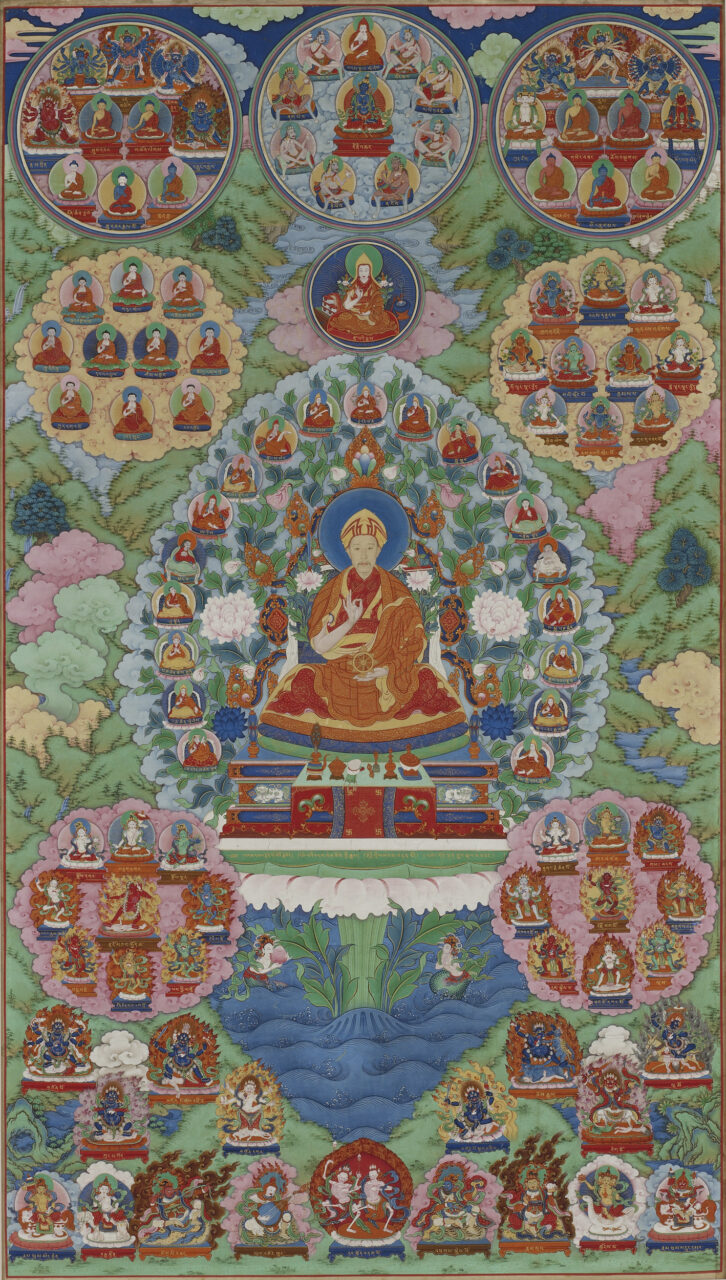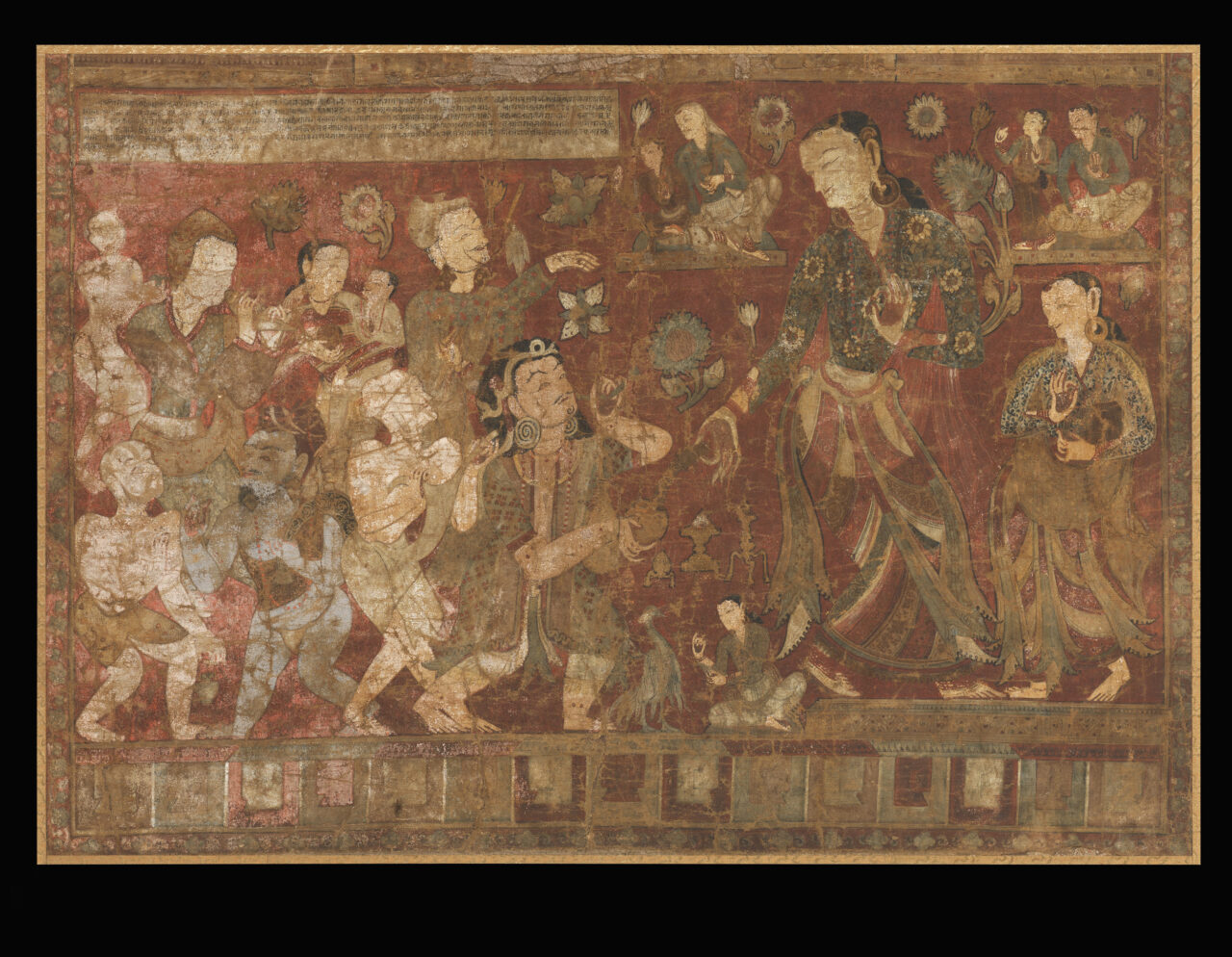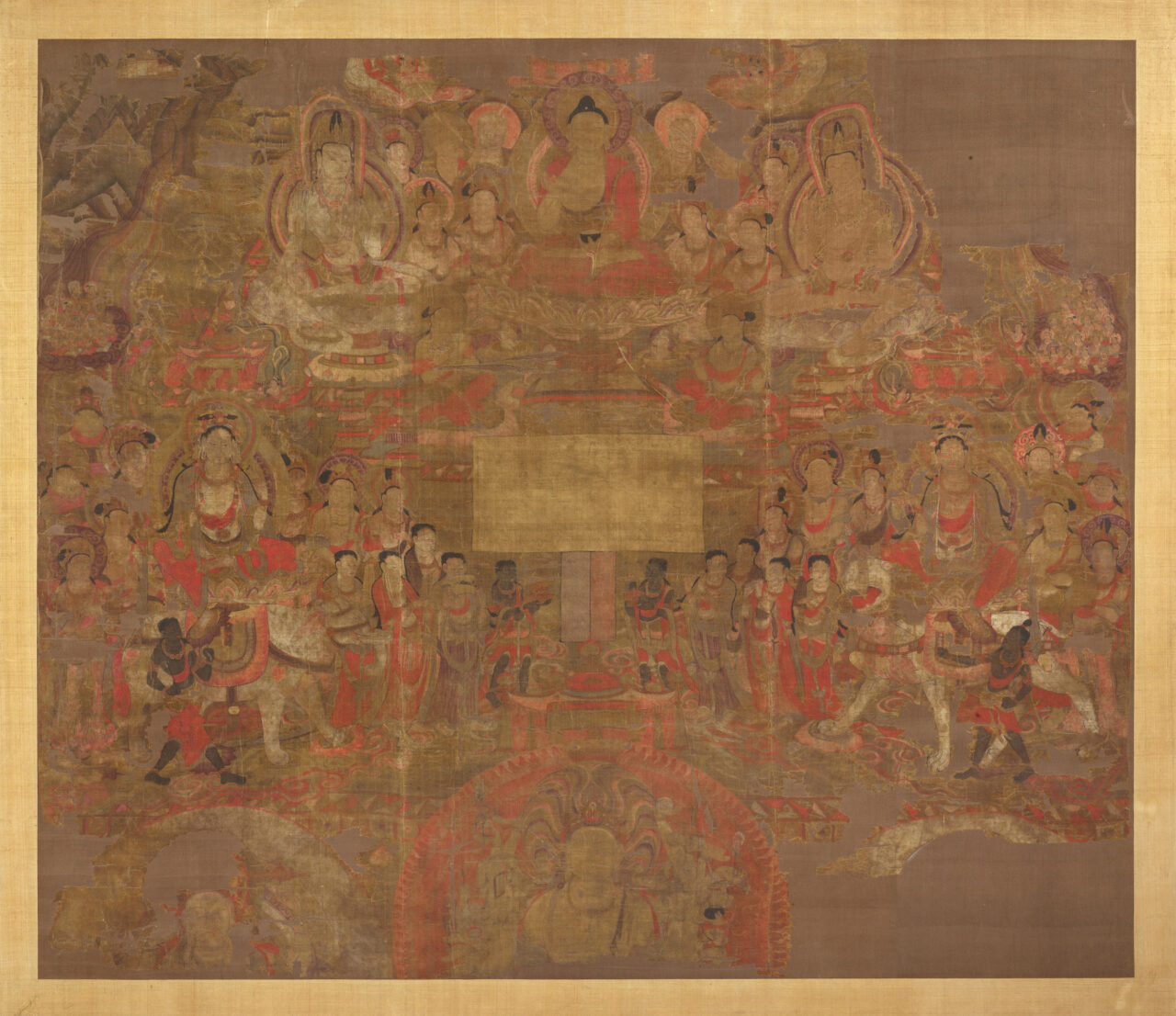In most Asian religious traditions, when an image of a deity is made, it must be made sacred (“consecrated”) by inviting the deity to inhabit it. A variety of rituals can be involved in this, including dotting the image’s eyes, visualizing the descent of the deity into the image, writing mantras on the back of a thangka, or placing sacred texts and mantras inside of a statue.
Different Asian religious traditions posit different types of divine beings. Hindus generally believe in an all-encompassing God-like being, called Brahman. They also believe in a variety of other gods (deva), including Brahma, Vishnu, and Shiva. Early Buddhists denied the existence of a single, all-powerful creator god. Nevertheless, they always recognized a variety of powerful spirits, like gandharvas and nagas. Mahayana Buddhists came to see bodhisattvas as beings of enormous power, and buddhas themselves as cosmic beings with the ability to create entire universes. Buddhist and Bon traditions in Tibet worshiped a variety of other gods (Tib. lha), like the mountain gods, or gods of the land. According to Buddhist tradition, enlightened deities are seen as beyond the cycle of death and rebirth, whereas gods (including Hindu gods) are not.
In the Himalayan context, iconography refers to the forms found in religious images, especially the attributes of deities: body color, number of arms and legs, hand gestures, poses, implements, and retinue. Often these attributes are specified in ritual texts (sadhanas), which artists are expected to follow faithfully.
In the Tibetan Buddhist and Bon traditions, “lama” is a term of respect for a high monk or religious teacher, often a monastery abbot or a tulku. The Sanskrit equivalent is “guru,” meaning “venerable one” or “teacher.” In some traditions, like the Kagyu, lama is also a person who has completed a three-year retreat practice.
A thangka is a Tibetan hanging scroll, usually painted on cotton, and then mounted in a silk brocade mount. Thangkas can also be textiles woven or assembled in the appliqué technique. Thangkas are often kept rolled up around a wooden dowel affixed to the bottom end of the silk mounting, which also helps keep the scroll flat when hung. Almost all thangkas show religious subjects. Similar paintings produced in Nepal are called “paubha.”
Historically, Tibetan Buddhism refers to those Buddhist traditions that use Tibetan as a ritual language. It is practiced in Tibet, Mongolia, Bhutan, Ladakh, and among certain groups in Nepal, China, and Russia and has an international following. Buddhism was introduced to Tibet in two waves, first when rulers of the Tibetan Empire (seventh to ninth centuries CE), embraced the Buddhist faith as their state religion, and during the second diffusion (late tenth through thirteenth centuries), when monks and translators brought in Buddhist culture from India, Nepal, and Central Asia. As a result, the entire Buddhist canon was translated into Tibetan, and monasteries grew to become centers of intellectual, cultural, and political power. From the end of the twelfth century, Tibetans were exporting their own Buddhist traditions abroad. Tibetan Buddhism integrates Mahayana teachings with the esoteric practices of Vajrayana, and includes those developed in Tibet, such as Dzogchen, as well as indigenous Tibetan religious practices focused on local gods. Historically major traditions of Tibetan Buddhism are Nyingma, Kagyu, Sakya, and Geluk.




